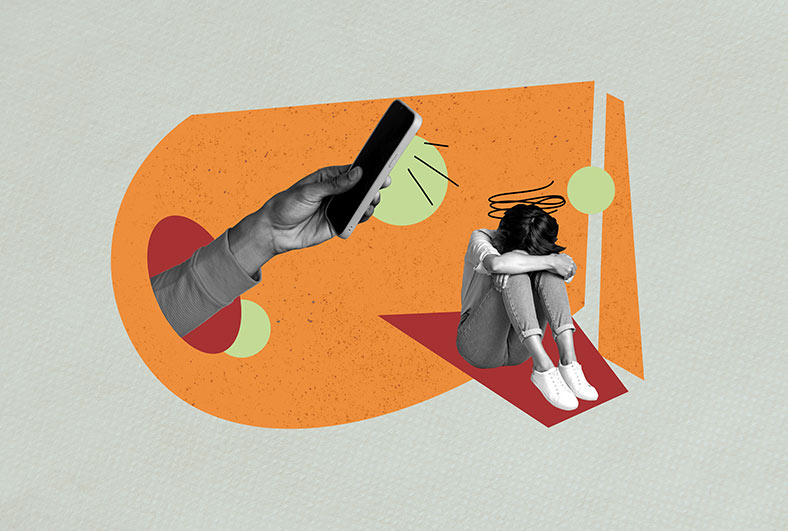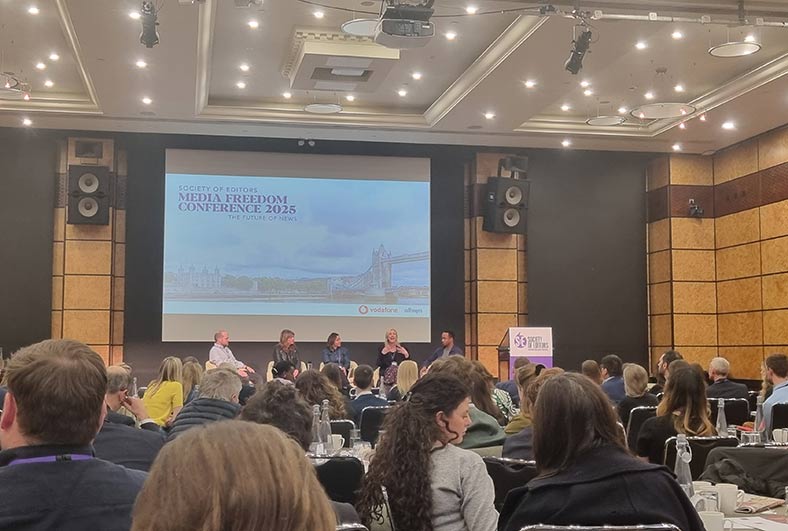Blog / Events / Journalists
Journalist safety and what can be done to improve it

Is your news organisation doing enough to protect journalist safety? With journalist imprisonment at a record high and online violence on the increase, especially towards women, it’s vital to consider protections in the media.
At the Society of Editors Conference, a panel consisting of Carole Cadwalladr, writer at The Guardian and The Observer; Dr Rebecca Whittington, online safety editor at Reach plc; Catalina Cortes, acting emergencies director at the Committee to Protect Journalists; and Jerome Starkey, defence editor at The Sun, discussed the current landscape and what steps need to be taken to improve the situation.

Current safety concerns and issues
Online abuse is on the rise. Reach plc’s Dr Rebecca Whittington has been in her role for about three and a half years, and highlighted that reports of online abuse have gone up by around 60% year on year. That abuse is even worse for women journalists – research by UNESCO global reach showed that 75% of women working in journalism had experienced some kind of online harm, abuse, or violence connected to their work. Rebecca conducted her own work after this that showed 20% had considered leaving journalism.
Carole has experienced this herself. She was sued as a result of her reporting into the Brexit referendum for The Guardian, and then became a target for a coordinated campaign of abuse and intimidation:
‘It was an absolute cycle of abuse. It was intended to silence me and intimidate me and chill my reporting and chill other people’s reporting into this.’
However, the threats aren’t just online. Rebecca mentioned ‘an issue with covering an inquest at the coroners court where people actually barred the doorway to stop the journalist from going in and then intimidating the journalist in that room as well’.
The need for change and investment from news organisations
Journalism is always changing as an industry and under threat from different issues. Carole believes that the biggest threat right now is news organisations themselves because ‘they are failing to understand the new hybrid threat landscape in which what is happening online is not just people saying bad words, it’s a weapon being used against individuals’.
The way for organisations to deal with that threat, according to Catalina, is via investment:
‘News outlets need to understand that they have to invest in safety. It has to be a priority and has to be part of the budget because if they don’t, there will be in a scenario where journalists will not be able to do their jobs.’
Jerome felt that collaboration should be part of the change. He said that while ‘we compete for stories, we actually need to collaborate for journalists’ safety’. It’s something he has already seen in his line of work as a correspondent in war zones, with different organisations working together to make sure journalists are kept safe.
Rebecca highlighted the importance of restoring broken connections:
‘The connection between some of the authorities that are placed to actually help facilitate journalists has fallen down. We need to see authorities standing together and talking about why journalism is so important, to protect it and protect democracy’.
Analysing the risk and the importance of assessments
Catalina believes that safety needs to be part of the planning process for all journalists in the current climate:
‘You need to consider, where are the risks? Who could this story upset? Analyse all the impacts that this could have and the effect on journalist wellbeing, in terms of physical, digital, and legal threats.’
This is an approach already in place at Reach plc, done via risk assessments. Rebecca shared the approach of the online safety and physical safety of a journalist, as well as issues such as health insurance for travel:
‘I do strongly feel that all news organisations should offer their journalists the opportunity to have that risk assessment element to their work. Give them the tools they need to be able to assess their own safety and ask questions about that, and then provide them with the resources to support that need.’
These sort of assessments are already in place for journalists heading out to war zones, but Jerome said that more could be done in the newsroom to make journalists feel that they can talk about their safety concerns:
‘Journalists can set a culture where people have the opportunity to say “I’m scared” or “I’m concerned” and there’s no shame attached to that. In fact, it’s a responsible thing for journalists to raise and something we can all be part of. I really encourage that anyone who has concerns, feels that they can raise them early.’
If you are a journalist who has safety concerns (in any aspect of your job), find resources from the Committee to Protect Journalists on their website.
Find out more about Rebecca Whittington’s work in this ResponseSource interview.